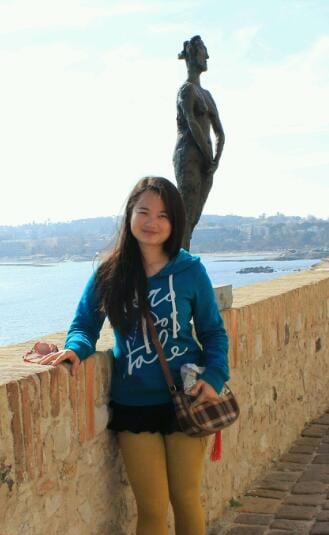
In Paris, whenever I’m asked where I am from, I have difficulty in giving a short answer. I am a Chinese national, which is apparent from my Asian face, but I’m also on exchange to a French university from an American graduate school. For many, however, the fact that I’m studying public diplomacy (PD) in France, a fancy new subject that is coined by an American is more confusing than my trajectory of school life.
Here I am in Paris, attending a class called “Public diplomacy and international communication”. Unlike in the Elliott School where my classmates were mostly either from Asia or the US, here in my public diplomacy class in Sciences Po (Paris), the classroom is composed of students from all over the world including India, Canada, Columbia, Nigeria, France, Britain, the US, China, etc.
The benefit of a diverse class background is that I can always hear an insider explaining the public diplomacy of his or her country, as well as their views on China. These opinions, which arise in almost every class and form a fierce debate afterwards, however, have shocked me from time to time.
Controversy #1: “PD in a non-democracy never works.”
My first day of the class started with the comment “PD in a non-democracy never works” from an American classmate. I was sitting in the front row, blushed and shocked. I didn’t take it personally, but I was quite disappointed that in later classes, this sentiment was expressed repeatedly among my classmates.
When we covered the practice of nation branding in PD, the Olympics in Beijing was cited as an example. A Canadian classmate then negated China’s Olympics showbiz with reference to China dubbing the voice of the girl who sang a nationally reputed song. I was surprised to realize that for an emerging power like China, whenever it tries hard to prove itself, people in the west will still link its action with the governing ideology. Under such circumstances, they will be most easily impressed with the scandal the smears China’s entire image. Hence, China’s display of its ancient culture is swamped under such mindset.
Controversy #2: China + Syria = China’s failure in PD
Right after China vetoed the UN resolution to request the Syrian president to resign, every time I walked in the 13th quartier in Paris which is full of Arabs, I was afraid I would be kidnapped. This fear converts to the anxiety of being attacked verbally in my PD class. Neither of these happened, but China and Syria was constantly brought up in the class as well as the French media.
Once we had Bernard Kouchner as a guest speaker, who was the former French Minister of Foreign and European Affairs, who is certainty furious at how “our friend China” has obstructed the French active negotiation to pass the resolution on Syria, and under this comparison, China is easily depicted as the irresponsible, self-interested power. I’m not defending China’s stance here, but I have to point out that the fact that the world lacks knowledge about why China is against international action against Syria IS an example of China’s failure in public diplomacy.
Comics on China and Russia vetoing UN resolution on Syria France 24, the French international news channel. Retrieved on 03/03/2012.
Though this is quite sad, I have found that people regardless of their nationality have formed their opinions on current affairs based on media coverage. Criticism against China is prevailing in the western media, while China’s voice of defense is usually ignored or given limited coverage. In fact, every non-Chinese I have talked to has a duplicated mindset of what’s on the media, that is, China is letting civilians dying in Syria while holding its vested geopolitical interests. In the United Nations, every country has been acting on behalf of itself, while concerned with the safety of others in the world. Do the western powers like France, which has been trying to reestablish itself internationally and the US have no individual agenda in mind?
I try to explain things in China to my classmates when they express hostile opinions. Their overwhelmingly negative evaluation of China is due to China’s Communist root (usually perceived as contrary to democracy), one-party system, and the lack of a strong, credible international media. As an exchange student studying abroad, I myself is part of the practice of public diplomacy. And at present, I’m enjoying my role that transcends Chinese media such as CCTV (China Central Television) English and the 24-hour English Channel CNC (China Xinhua News Network Corporation) who are perceived to be propagandists among those who have heard of them.







